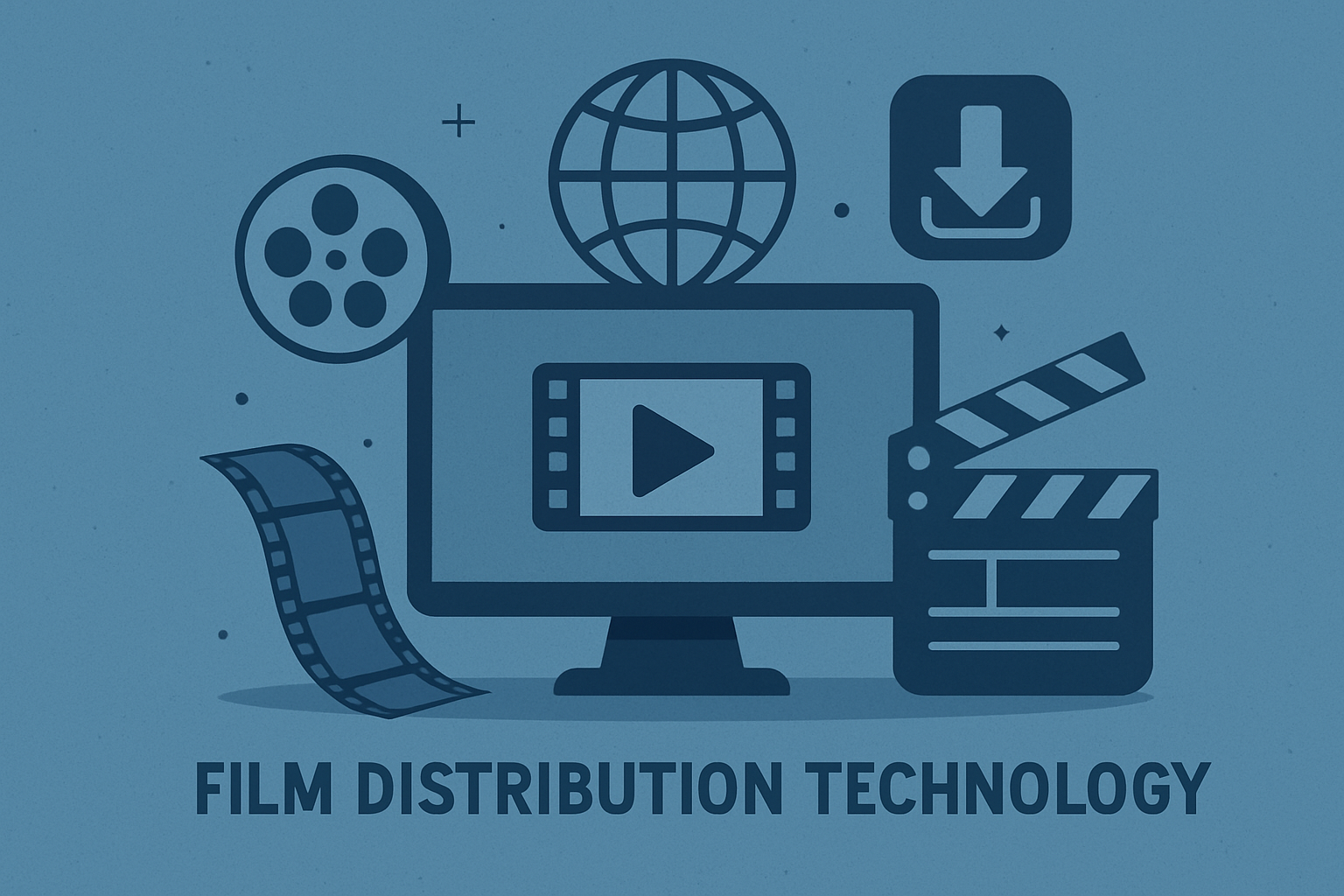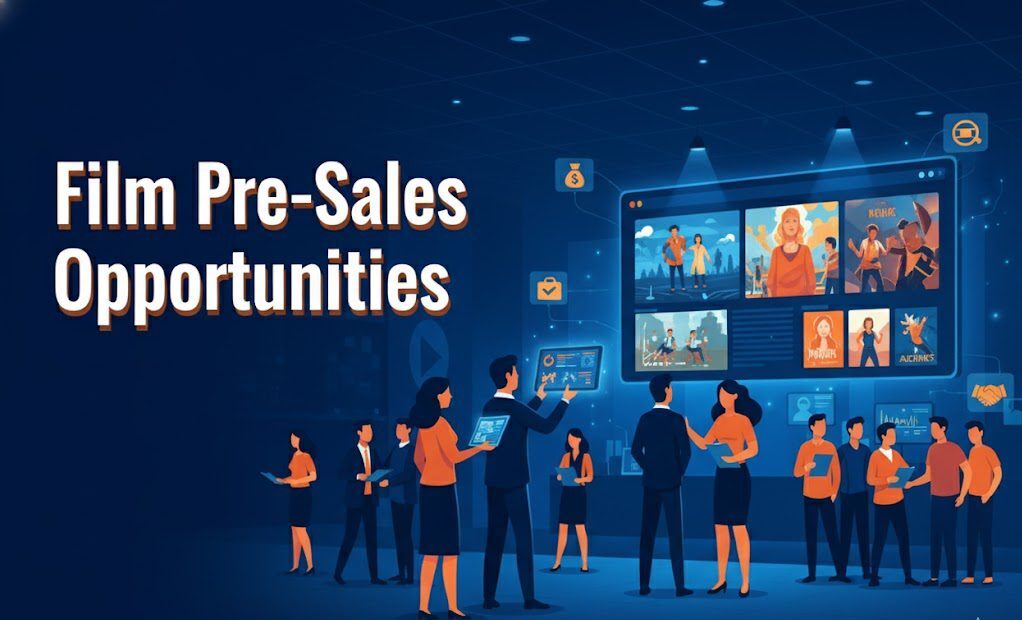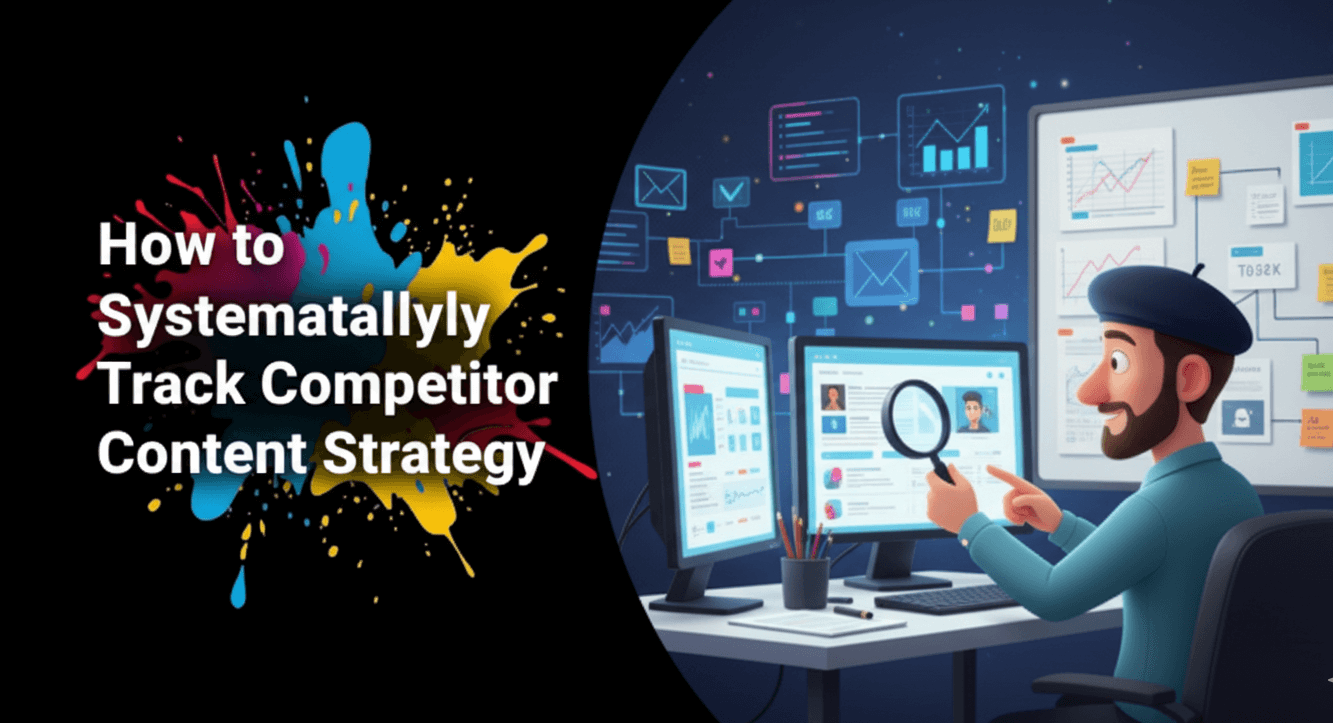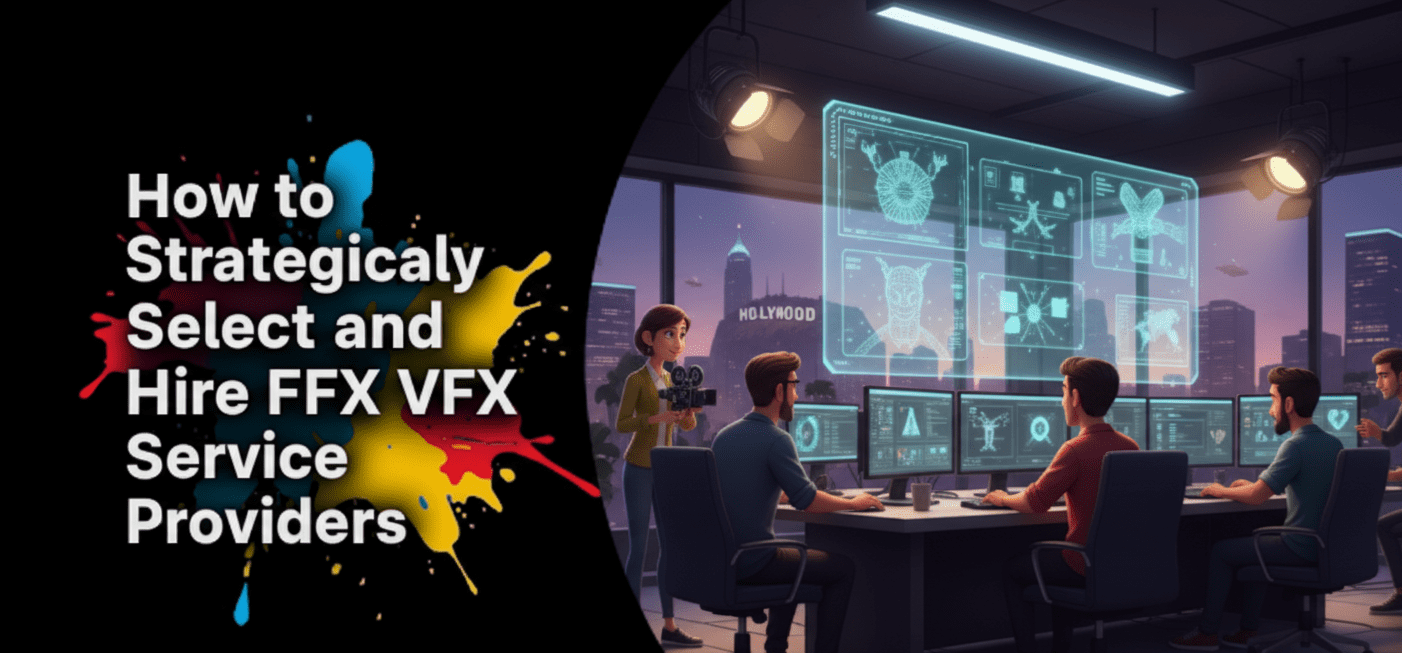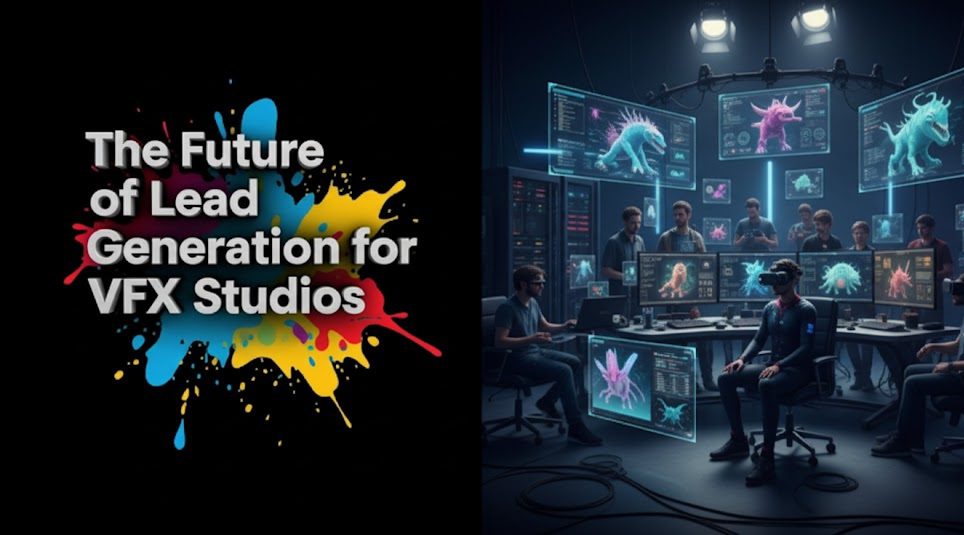Introduction
The magic of filmmaking doesn’t end when the director yells “cut!” Getting those cinematic stories from the studio to screens worldwide is an epic journey in itself. In today’s fast-paced digital world, film distribution technology is the unseen engine powering this crucial voyage. Gone are the days of solely relying on heavy film reels and complex logistical chains. Now, innovative technologies are revolutionizing how films reach their audiences, offering unprecedented reach, efficiency, and new avenues for monetization.
This article will explore the dynamic landscape of modern film distribution technology, uncovering the tools and trends that are reshaping the industry. You’ll gain insights into how these advancements can empower filmmakers, distributors, and content platforms to connect with viewers like never before, ensuring your content finds its global audience.
Table of content
- Introduction
- Key-Takeaways
- The Evolving Landscape of Film Distribution Technology
- Core Technologies Powering Modern Film Distribution
- Innovations on the Horizon: The Future of Film Distribution Tech
- Practical Applications: Tech in Action Across the Distribution Chain
- Strategic Adoption: Making Film Distribution Technology Work for You
- How Vitrina.ai Powers Your Film Distribution Strategy
- Conclusion
- FAQs
Key Takeaways
| Aspect | Insight |
| Evolution | Film distribution has massively shifted from physical reels to digital formats and cloud-based systems. |
| Core Technologies | SaaS, cloud computing, DAMs, and CDNs are fundamental to modern film distribution. |
| Key Innovations | AI, Blockchain, and 5G are poised to further revolutionize content delivery and monetization. |
| Practical Applications | Technology aids independent filmmakers, powers VOD platforms, ensures security, and enables data-driven decisions. |
| Strategic Adoption | While offering huge benefits, adopting new tech requires careful planning to overcome potential hurdles. |
| Vitrina.ai’s Role | Vitrina.ai helps stakeholders discover and connect with relevant film distribution technologies and partners. |
Struggling to Navigate Distribution Tech?

The Evolving Landscape of Film Distribution Technology
The way we watch movies has changed dramatically, and so has the technology that brings them to us. Understanding this evolution is key to navigating today’s complex media world. It’s a story of constant innovation, driven by the desire to reach more people, more efficiently.
What is Film Distribution Technology?
At its heart, film distribution technology refers to the tools, software, platforms, and infrastructure used to deliver finished films and video content to various exhibition channels. This includes everything from cinemas and television broadcasters to streaming services and online platforms. It’s not just about sending a file; it’s about managing rights, ensuring quality, tracking performance, and reaching the right audience. Think of it as the sophisticated digital pipeline that connects content creators with viewers. This technology encompasses a wide array of solutions, including digital asset management (DAM), content delivery networks (CDNs), digital rights management (DRM), and sophisticated analytics platforms. The goal is to make the journey of a film from post-production to the end-user as seamless, secure, and effective as possible.
The Journey: From Reels to Pixels – Evolution of Film Distribution Tech
The history of film distribution is a fascinating march of technological progress. For decades, distribution meant physically shipping heavy 35mm film prints to cinemas worldwide—a costly and cumbersome process. The advent of digital cinema in the early 2000s marked a pivotal shift, with Digital Cinema Packages (DCPs) replacing physical reels. This was just the beginning. The internet explosion, followed by the rise of streaming giants, completely rewrote the rulebook. Today, film distribution technology is overwhelmingly digital, cloud-based, and increasingly intelligent.
Traditional vs. Modern Distribution Methods
| Feature | Traditional Distribution (Physical) | Modern Distribution (Digital) |
| Format | Film reels (e.g., 35mm) | Digital files (e.g., DCP, MP4, MOV) |
| Delivery | Physical shipping (couriers, freight) | Digital transfer (internet, satellite, hard drives) |
| Cost | High (print duplication, shipping) | Lower (digital duplication, bandwidth) |
| Scalability | Limited by print availability | Highly scalable (instant global reach) |
| Security | Physical theft, damage | Piracy (requires DRM, watermarking) |
| Flexibility | Low (fixed prints, schedules) | High (dynamic updates, varied release windows) |
| Tracking | Manual reporting | Real-time analytics, automated reporting |
Key Milestones in Distribution Tech Evolution:
- Early 2000s: Introduction of Digital Cinema Packages (DCPs) and digital projectors in theaters.
- Mid-2000s: Rise of online video platforms like YouTube, paving the way for user-generated content distribution.
- Late 2000s/Early 2010s: Emergence and growth of Subscription Video on Demand (SVOD) services like <b>Netflix</b> and <b>Hulu</b>, requiring robust streaming technology.
- Mid-2010s: Cloud technology becomes integral for content storage, processing, and delivery.
- Late 2010s-Present: Increased focus on AI for content recommendations, data analytics, and automated quality control; exploration of blockchain for rights and royalties.
Core Technologies Powering Modern Film Distribution
The digital revolution hasn’t just changed how we watch films; it’s fundamentally altered the infrastructure that delivers them. Several core technologies form the backbone of today’s sophisticated distribution ecosystem, enabling global reach and unprecedented efficiency.
Building Blocks: Key Components of Today’s Distribution Tech
Modern film distribution technology relies on a suite of interconnected systems. Digital Asset Management (DAM) and Media Asset Management (MAM) systems are crucial for storing, organizing, and retrieving vast libraries of video files, metadata, and associated promotional materials. Content Delivery Networks (CDNs) play a vital role in ensuring smooth, high-quality streaming experiences by distributing content across geographically dispersed servers, closer to the end-users. For theatrical releases, Theatre Management Systems (TMS) automate and manage the playback of DCPs in cinemas. Furthermore, sophisticated transcoding services ensure content is in the correct format for myriad devices and platforms.
The Digital Wave: How Digital Transformation Reshaped Distribution
The internet and the subsequent digital transformation have been the most significant catalysts for change in film distribution. The shift from physical to digital has democratized access for filmmakers and broadened choices for consumers. Over-the-Top (OTT) streaming services have bypassed traditional gatekeepers like cable companies, delivering content directly to viewers via the internet. This has led to a boom in content creation and a fragmentation of the viewing landscape, making sophisticated film distribution technology more critical than ever to navigate this complex environment. The ease of global digital delivery has also opened up international markets like never before.
Up in the Cloud: The Role of SaaS and Cloud Computing
Cloud computing and Software-as-a-Service (SaaS) models have become indispensable in modern film distribution. Cloud storage offers virtually limitless capacity for large media files, while cloud-based processing handles tasks like transcoding and quality control (QC) efficiently. SaaS solutions provide powerful distribution tools—from content management to analytics and royalty reporting—on a subscription basis. This eliminates the need for hefty upfront investments in hardware and software, making advanced film distribution technology accessible even to smaller players and independent filmmakers. The scalability, flexibility, and cost-effectiveness of cloud and SaaS are undeniable advantages.
Examples of SaaS Tools in Film Distribution
| Tool Category | Example Use Cases | Potential Benefit |
| Content Management | Storing, organizing, and distributing master files | Centralized access, version control |
| Transcoding Services | Converting video files to various formats & bitrates | Platform compatibility, optimized streaming |
| Digital Rights Mgt. | Applying encryption and access rules | Piracy prevention, content security |
| Analytics Platforms | Tracking viewership, engagement, and revenue | Data-driven decisions, audience insights |
| Distribution Platforms | Delivering content to VOD services and aggregators | Streamlined workflows, broader reach |
| Royalty Reporting | Automating calculation and distribution of royalties | Transparency, efficiency |
Advantages of Cloud-Based Distribution:
- Scalability: Easily scale resources up or down based on demand.
- Accessibility: Access content and tools from anywhere with an internet connection.
- Cost-Effectiveness: Pay-as-you-go models reduce capital expenditure.
- Reliability: Cloud providers offer high uptime and data redundancy.
- Collaboration: Facilitates easier collaboration between distributed teams.
- Automatic Updates: SaaS solutions are typically updated and maintained by the provider.
Practical Applications: Tech in Action Across the Distribution Chain
Beyond the buzzwords, film distribution technology offers tangible solutions that address real-world challenges and opportunities for everyone from independent filmmakers to major studios. These tools are actively being used to streamline workflows, expand reach, protect assets, and make smarter business decisions.
Empowering Indies: Technology for Independent Film Distribution
For independent filmmakers, technology has been a great equalizer. Previously, securing distribution was a monumental hurdle. Now, a plethora of digital tools and platforms empower indies to reach global audiences. Aggregators help filmmakers get their movies onto major VOD platforms like Apple TV+, Amazon Prime Video, and others. Direct-to-fan (D2F) platforms allow creators to sell or rent their films directly to their audience, retaining a larger share of the revenue and building a direct relationship with their viewers. Crowdfunding platforms also leverage digital tech to fund and sometimes distribute independent projects. Marketing tools, from social media schedulers to email marketing services, are also crucial low-cost tech solutions for indies.
Decoding VOD: The Technology Behind Video-on-Demand
Video-on-Demand (VOD) – whether it’s SVOD (Subscription), TVOD (Transactional), or AVOD (Advertising-supported) – relies heavily on a sophisticated tech stack. Key film distribution technology components include:
- Encoding and Transcoding: Converting master film files into various digital formats and bitrates suitable for different devices and internet speeds.
- Digital Rights Management (DRM): Technologies like Google Widevine, Apple FairPlay, and Microsoft PlayReady that encrypt content to prevent unauthorized copying and viewing.
- Content Management Systems (CMS): To manage the vast libraries of content, metadata, and user information.
- Streaming Protocols: Technologies like HLS and DASH that ensure efficient and adaptive delivery of video over the internet.
- Player Technology: The video players embedded in websites and apps that decrypt and display the content for the user.
Fort Knox for Films: Ensuring Secure Content Delivery
Content security is paramount in film distribution. Piracy can decimate a film’s revenue potential. Therefore, robust film distribution technology for security is non-negotiable. Digital Rights Management (DRM) is a cornerstone, controlling who can access content and how. Forensic watermarking is another critical tool, embedding invisible identifiers into video files to trace the source of leaks. Secure screening platforms allow distributors to share pre-release content with press, buyers, or festival programmers with features like dynamic watermarking, access restrictions, and viewing analytics. Anti-piracy services actively monitor the internet for illegal copies and issue takedown notices.
Data-Driven Decisions: Leveraging Analytics in Distribution Strategy
In the digital age, data is gold. Film distribution technology provides powerful analytics tools that offer deep insights into audience behavior and content performance. Distributors can track:
- Who is watching what, where, and on what devices.
- Viewer engagement metrics like completion rates and drop-off points.
- The effectiveness of marketing campaigns.
- Revenue generated from different platforms and territories.
- This data allows distributors to make informed decisions about release strategies, marketing spend, content acquisition, and even future productions. A/B testing different trailers or artwork using analytics can significantly optimize promotional efforts.
The Unsung Hero: Metadata Management for Discoverability
Metadata – the data about data (title, genre, cast, crew, synopsis, keywords, etc.) – is an unsung hero in film distribution technology. Accurate, rich, and standardized metadata is crucial for discoverability. It powers search functions on VOD platforms, helps recommendation engines suggest relevant content, and ensures films are correctly categorized and presented. Efficient metadata management systems help distributors maintain consistency across multiple platforms and territories, improving the chances of a film being found and watched by its target audience.
Table: Key Tech Solutions for Different Distribution Stages
| Distribution Stage | Key Technologies Used | Purpose |
| Pre-Distribution | Rights management software, secure screening platforms | Clearing rights, secure previews for buyers/press |
| Ingestion & Prep | DAM/MAM, transcoding services, QC tools, metadata tools | Organizing assets, format conversion, quality checks, tagging |
| Delivery | CDNs, satellite delivery, secure file transfer protocols | Efficient and secure delivery to exhibitors/platforms |
| Exhibition (VOD) | DRM, streaming protocols, player technology, CMS | Secure playback, user management, content organization |
| Monetization | Ad insertion tech (AVOD), payment gateways (TVOD), analytics | Revenue generation, performance tracking |
| Post-Release | Analytics platforms, royalty reporting software | Audience insights, financial reconciliation |
Tips for Leveraging Technology Effectively:
- Define your needs: Understand your specific distribution goals before investing in technology.
- Prioritize integration: Choose solutions that can work together seamlessly.
- Focus on user experience: Whether for internal teams or end-viewers, usability is key.
- Stay informed: The tech landscape is always evolving; keep learning about new tools.
- Don’t neglect security: Implement robust measures to protect your valuable content.
- Leverage data: Use analytics to inform every step of your distribution strategy.
Want to Future-Proof Your Content Delivery?

Strategic Adoption: Making Film Distribution Technology Work for You
Embracing new film distribution technology isn’t just about acquiring the latest tools; it’s about strategic integration into your overall business plan. Understanding both the compelling benefits and potential challenges is crucial for making informed decisions that drive success.
The Upside: Tangible Benefits of Advanced Distribution Tech
Adopting modern film distribution technology offers a multitude of advantages. Perhaps the most significant is wider reach; digital platforms can take a film global almost instantaneously. This is coupled with cost savings, as digital delivery is often cheaper than physical methods, and SaaS solutions can reduce upfront IT investment. Improved efficiency comes from automating workflows like transcoding, metadata management, and royalty reporting. Furthermore, advanced tech enables better audience engagement through personalized recommendations and interactive features, and provides valuable data insights for smarter decision-making. Ultimately, these benefits contribute to increased revenue potential and a stronger competitive edge.
Navigating Hurdles: Challenges in Adopting New Technologies
Despite the clear benefits, adopting new film distribution technology can present challenges. The cost of acquiring and implementing some sophisticated systems can be a barrier, especially for smaller companies. Integration with existing legacy systems can be complex and time-consuming. There’s often a skill gap, requiring teams to learn new software and processes, which might necessitate training or hiring new talent. Sometimes, there’s an internal resistance to change from established workflows. Keeping up with the rapid pace of technological advancements and ensuring interoperability between different vendor solutions are also ongoing concerns.
Streamlining Success: Automating Film Distribution Workflows
Automation is a key benefit offered by much of today’s film distribution technology. Automating repetitive and time-consuming tasks frees up human resources for more strategic activities. For example:
- Automated metadata tagging: AI can analyze video content and automatically generate relevant tags.
- Automated transcoding and QC: Setting up watch folders that automatically process new content to required specifications.
- Automated asset delivery: Systems that automatically deliver the correct files and metadata to various platforms based on pre-set schedules and requirements.
- Automated royalty reporting: Software that tracks sales and views across platforms and calculates and distributes royalties accurately.
By streamlining these workflows, distributors can reduce errors, speed up time-to-market, and operate more efficiently.
Table: Cost-Benefit Analysis of Adopting New Tech (Conceptual)
| Consideration | Potential Costs | Potential Benefits |
| Financial | Software licenses, hardware, implementation services | Increased revenue (wider reach), reduced operational costs |
| Operational | Training time, integration challenges, workflow disruption | Improved efficiency, faster time-to-market, fewer errors |
| Strategic | Risk of choosing wrong tech, vendor lock-in | Competitive advantage, access to new markets, data insights |
| Human Resources | Need for new skills, potential staff resistance | Higher staff productivity, improved morale (less menial work) |
Steps for Successful Tech Adoption:
- Thoroughly assess your current workflows and pain points.
- Clearly define your objectives for new technology.
- Research and compare different solutions and vendors. Ask for demos and trials.
- Consider scalability and future needs.
- Plan for integration with existing systems.
- Develop a comprehensive training plan for your team.
- Start with a pilot project if possible.
- Continuously monitor performance and gather feedback for optimization.
How Vitrina.ai Powers Your Film Distribution Strategy
Navigating the complex and ever-evolving world of film distribution technology can be daunting. Identifying the right partners, services, and technologies that align with your specific needs is crucial for success.
This is where Vitrina.ai steps in. As a global B2B marketplace for the Media & Entertainment industry, Vitrina.ai connects content creators, distributors, and service providers, offering a centralized platform to discover and engage with a wide array of solutions relevant to film distribution.
Whether you’re searching for cutting-edge SaaS platforms for content delivery, data analytics providers to understand your audience better, or specialized services for localization and secure distribution, Vitrina.ai provides the tools and connections. By leveraging Vitrina.ai‘s extensive database and network, industry professionals can more easily find vendors specializing in areas like cloud-based mastering, AI-driven QC, blockchain-based rights management, or advanced VOD platform technologies. This facilitates more informed decision-making, helping you to strategically implement the film distribution technology that will best serve your content and audience.
Conclusion
The landscape of film distribution technology is more dynamic and exciting than ever before. From AI-driven insights to the promise of blockchain security and the immersive potential unlocked by 5G, innovation is continuous. For filmmakers, distributors, and platforms, embracing these technological advancements is no longer a luxury but a necessity for staying competitive and effectively connecting stories with audiences worldwide. By understanding the tools available and strategically adopting the right solutions, the industry can look forward to a future of even more efficient, engaging, and far-reaching film distribution.
Frequently Asked Questions
The most significant trend is arguably the increasing dominance of streaming and OTT platforms, coupled with the growing use of AI and data analytics to personalize experiences and optimize distribution strategies. Cloud-based workflows are also fundamental.
New technologies offer independent filmmakers unprecedented access to global audiences through digital aggregators, direct-to-fan platforms, and affordable cloud-based tools for mastering, delivery, and marketing, significantly lowering traditional distribution barriers.
DRM stands for Digital Rights Management. It’s a set of access control technologies used by publishers and copyright holders to limit the use of digital content and devices. It’s crucial for preventing piracy and ensuring that content is viewed only by authorized users according to the licensing terms.
AI is used in various ways, including personalizing content recommendations, automating quality control (QC) processes, predicting audience preferences and box office performance, optimizing marketing campaigns, and even assisting with automated subtitling and dubbing for localization.


